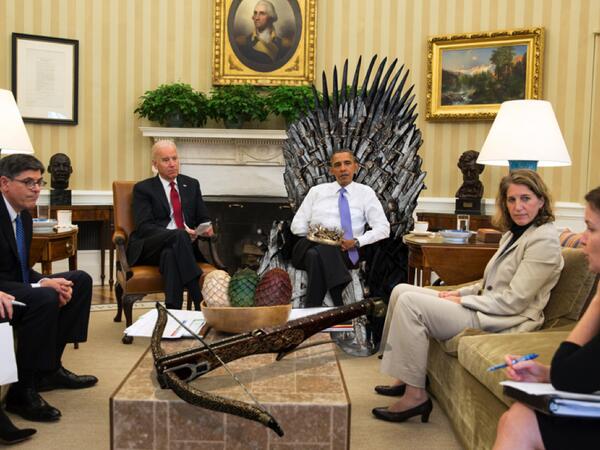On May 4, 2014, a picture began to circulate that showed President Barack Obama sitting on a throne in the West Wing with a gold crown on his knee.
At first, many assumed that the picture had been created by one of the president’s enemies. But just as many were then shocked to discover that the image had been created and released by the White House itself.
Here is the original White House tweet that released the image:

Writing for BenSwann.com, Michael Lotfi provides the context for the photoshopped image:
The picture depicts “King Obama” sitting upon the “Iron Throne” at Kings Landing in the ancient kingdom of Westeros from the HBO hit series Game of Thrones. The photo looks as if it was lifted straight from The Onion. However, it is not. The image is a result of Obama’s speech at last week’s White House Correspondents’ Dinner where he joked about enacting more executive orders. The administration took it upon themselves to create the photo of King Obama, and the official White House Twitter account sent out the tweet before last week’s episode aired.Obama sits with the King’s crown in his hands and former King Joeffrey’s crossbow sitting on the coffee table. The tweet reads “The Westeros Wing.”
Of course, the idea of Obama exercising dictatorial powers is no laughing matter. Rand Paul criticized Obama last year for “acting like a king or monarch.”
Furthermore, Obama has killed countless innocent victims by carrying out unilateral drone strikes on the people who find their way onto his kill list.
This is not the first time the president has attempted to use humor to push his agenda. In March, Obama joined comedian Zach Galifianakis on an episode of Between Two Ferns to push Obamacare.
What do you think about the image? Leave a comment with your thoughts HERE.







